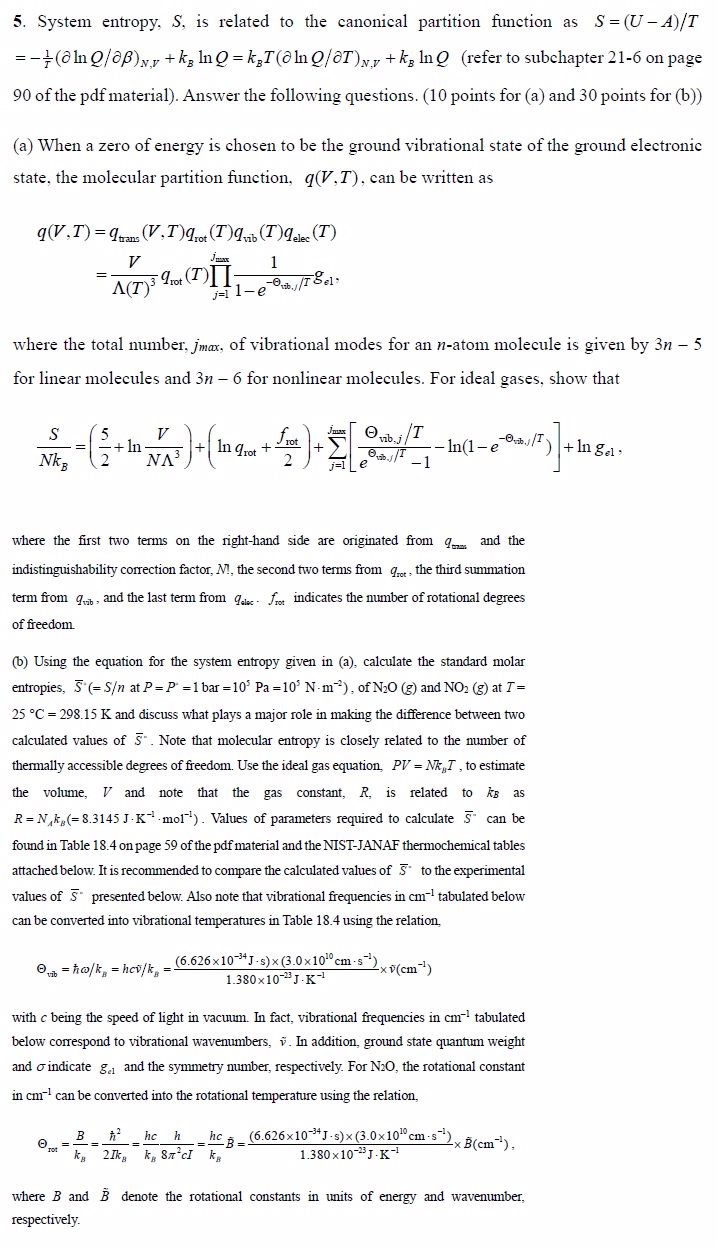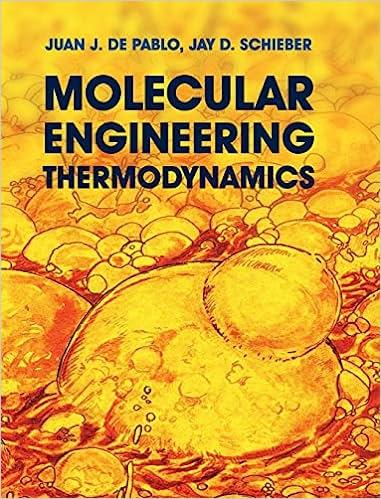Answered step by step
Verified Expert Solution
Question
1 Approved Answer
System entropy, S , is related to the canonical partition function as S = U - A T = - 1 T ( d e
System entropy, is related to the canonical partition function as
elTrefer to subchapter on page
of the pdf material Answer the following questions. points for a and points for b
a When a zero of energy is chosen to be the ground vibrational state of the ground electronic
state, the molecular partition function, can be written as
where the total number, of vibrational modes for an atom molecule is given by
for linear molecules and for nonlinear molecules. For ideal gases, show that
where the first two terms on the righthand side are originated from and the
indistinguishability correction factor, the second two terms from the third summation
term from and the last term from indicates the number of rotational degrees
of freedom.
b Using the equation for the system entropy given in a calculate the standard molar
entropies, at bar : of and at
and discuss what plays a major role in making the difference between two
calculated values of Note that molecular entropy is closely related to the number of
thermally accessible degrees of freedom. Use the ideal gas equation, to estimate
the volume, and note that the gas constant, is related to as
Values of parameters required to calculate can be
found in Table on page of the pdf material and the NISTJANAF thermochemical tables
attached below. It is recommended to compare the calculated values of to the experimental
values of presented below. Also note that vibrational frequencies in tabulated below
can be converted into vibrational temperatures in Table using the relation,
with being the speed of light in vacuum. In fact, vibrational frequencies in tabulated
below correspond to vibrational wavenumbers, tilde In addition, ground state quantum weight
and indicate and the symmetry number, respectively. For the rotational constant
in can be converted into the rotational temperature using the relation,
tildetilde
where and tilde denote the rotational constants in units of energy and wavenumber,
respectively.

Step by Step Solution
There are 3 Steps involved in it
Step: 1

Get Instant Access to Expert-Tailored Solutions
See step-by-step solutions with expert insights and AI powered tools for academic success
Step: 2

Step: 3

Ace Your Homework with AI
Get the answers you need in no time with our AI-driven, step-by-step assistance
Get Started


